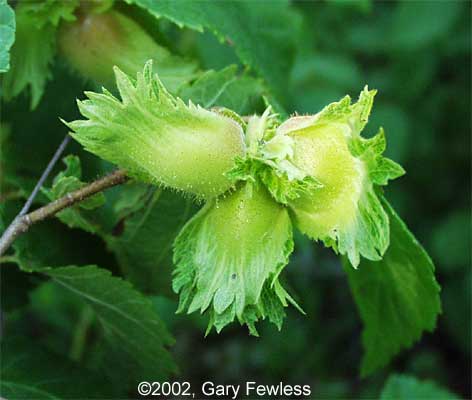In a previous article, we discussed some of the basics for how to choose which wildlife trees and shrubs to plant. For this article, I would like to share more specific details about several shrubs, why to choose them, and where to plant them. These native shrubs fit a fairly wide array of soil and climatic conditions in Wisconsin and provide a benefit to a wide variety of wildlife. They are by no means the end-all of shrubs, and instead are a pretty good starting point for thinking about which ones to plant. I have identified shrubs by the season that they provide food, and your best bet is to plant or maintain shrubs so that you have food sources throughout the year.
Spring and early summer
Serviceberry, Chokecherry, and Alder are all good shrubs to consider for spring food. There are several varieties of Serviceberry to consider based on the conditions you will be planting into (e.g. moist or dry forest, upland or lowland). They grow into a small “tree” with white flowers early in the growing season and bear fruit in late June. A wide array of wildlife consumes their sweet, purple berries including birds, fox, squirrels, chipmunks and bears. Serviceberry can tolerate some shade and will grow in open conditions as well.
Summer
When looking for mid- to late-summer shrubs, Raspberry, Blackberry, and Elderberry are all good choices. Raspberries and blackberries grow throughout the state along woodland edges and clearings. More than 100 different wildlife feed on Raspberries and Blackberries and a thicket of these shrubs provide great escape cover small mammals and birds. These are a great choice for a wildlife opening in your woodlands as they will spread once established.
Fall
For the fall, the Dogwoods (especially the Red-osier) and Viburnums are pretty good choices, but your best bet are Hazelnuts. The fruit of Hazelnut is a great food source for a variety of wildlife along with their flowers (grouse) and their leaves and twigs (deer, snowshoe hares and beavers). Hazelnut tends to naturally occur in thickets which provides great cover from predators. So, try to do any planting of these in groups along a woodland edge or in openings.
Winter
There are several shrubs that hold onto their fruit well into the winter including American Highbush Cranberry, Ninebark, Sumac, and Wild rose. Any of these will be a good choice depending on your soil conditions. If you have drier/sandier soil, then think about the Sumacs or the Ninebark. If your soil is a bit moister, then Highbush Cranberry would be a good choice especially if there is not full sun light where you are planting. Wild roses grow well in a variety of soil conditions, just make sure you get the native variety. Wildlife also require some protection from the wind and cold in the winter, so don’t be afraid to add some cedar or spruce to your planting mix.
If you would like to learn more about these other plants to attract wildlife, check out these publications: So, what should I plant? and Landscape plants that attract birds
And here is a guide for planting your shrubs and trees: Woody cover for wildlife
